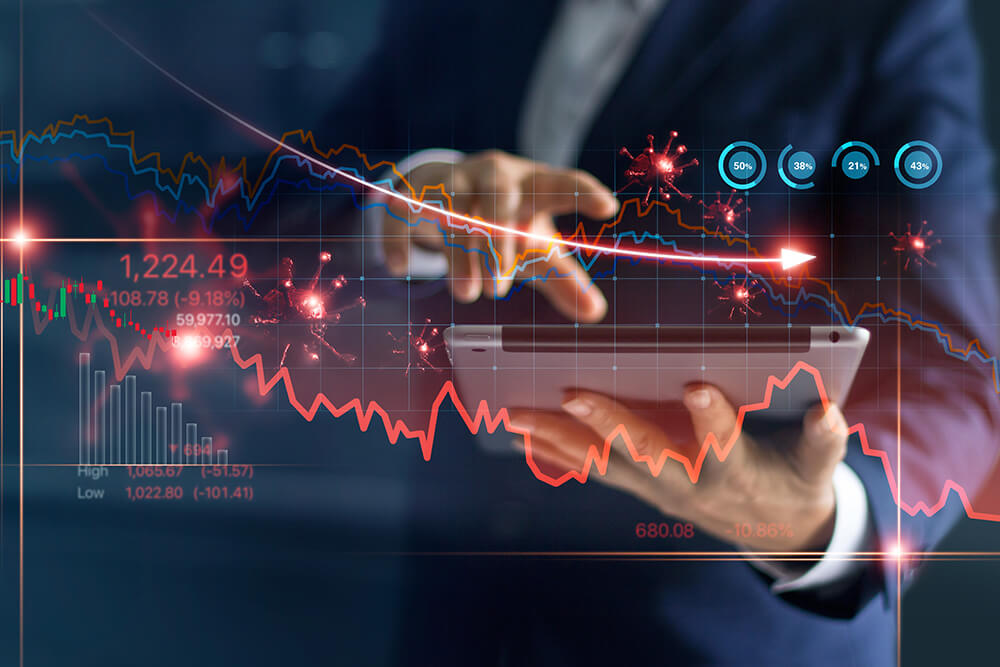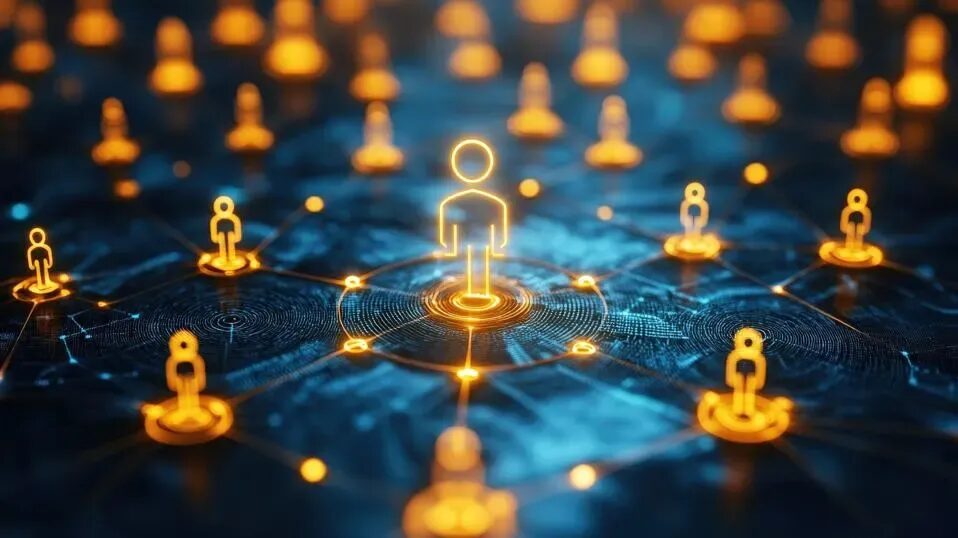Impact of COVID-19 on Technology
2 July 2021
The COVID-19 pandemic altered our world in many ways including the acceleration of digital transformation. Here we discuss the five technology megatrends of our times and how their adoption was accelerated by the reality of trying to sustain business as well as live and cope in a COVID-19-impacted world.

While many were juggling at-home schooling of children and professional responsibilities amid stay-at-home orders because of COVID-19, the digital transformation accelerated. Here are five of the biggest technology trends of our times and how the coronavirus pandemic accelerated their adoption. This acceleration will change how businesses operate and compete as they emerge out of the pandemic.
1. Artificial Intelligence (AI)
Even before COVID, artificial intelligence helped organizations engage with customers and automate and enhance business processes. We have more data than ever before and AI allows us to make sense of the data faster. During the COVID pandemic, when time was of the essence, AI helped public health officials predict infection rates as well as ICU demand and capacity.
As we start to emerge from lockdown, AI is helping companies understand economic trends, as well as their competitors and customers. One of my clients is a construction company and they are using AI and satellite image data to better understand and analyze progress against their competitors.
AI can read now read, write, see and speak. SummarizeBot, an AI and blockchain-powered bot, consolidates all types of information in a concise summary of the key points, keywords and most important parts of the content. AI can not only read, but it can now write. Not only do human writers produce content for some of the biggest names in journalism such as The New York Times, Washington Post and Forbes, but machines do as well. Alibaba, the world’s largest e-commerce platform, automatically generates product descriptions through natural language processing AI.
We have seen AI with the sense of sight as well through facial recognition and machine vision capabilities. Domino’s Pizza uses machine vision and an AI tool to scan pizzas to ensure it passes quality-control standards. And, certainly, in healthcare, machine learning helps scan images of people’s lungs to see the affects of coronavirus and other diseases, evaluate other images and analyze X-rays and otherwise help out with automation and accessibility.
Artificial intelligence helps machines speak as well. Chatbots are an integral part of regular customer communication and engagement especially as more people were furloughed due to COVID. Lidl supermarket has a wine bot called Margot that gives customers wine recommendations via Facebook Messenger that will complement whatever they’re eating. Many of us rely on Siri, Alexa and Google Home to speak directions, the forecast, our schedules and more to us each day and they can do this because of artificial intelligence.
2. Robotics, Drones and Vehicle Automation
The next mega trend that accelerated during COVID-19 is the use of robotics, drones and vehicle automation. Of course, AI is a massive enabler to these technologies. To ensure compliance with social distancing, China used drones to monitor its population, Amazon put machine learning to use in its warehouses to confirm social distancing and in Singapore, a Boston Dynamics robot in the shape of a dog and aptly named Spot patrolled parks. If a violator was spotted, Spot would approach and play a recorded message to remind them of the mandates for social distancing and large groups.
Another way robots, drones and vehicle automation are put to use is to ensure resiliency of the supply chain. During COVID, many companies experienced disruptions to their supply chains. In order to avoid that situation in the future in the event of future pandemics, they are beginning to explore how to minimize human involvement in the supply chain where possible. As a result, the use of robots for deliveries and automating trucks and ships throughout supply chains is being tested.
UPS has already been delivering cargo with self-driving trucks since last year between Phoenix and Tucson, Arizona, in a partnership with TuSimple. And Daimler Trucks and its subsidiary Torc Robotics have deployed heavy-duty trucks on the public highways in Virginia.
Amazon received FAA approval to use delivery drones from Wing (a subsidiary of Google parent company Alphabet) to make deliveries in Blacksburg, Virginia, and the demand more than doubled during the COVID-19 pandemic. JD.com, the Chinese e-commerce giant had already been using drones for delivery since 2016.
In healthcare, robots have been used to deliver medicine, complete patient intake and even for surgery. Mako robotic systems have already completed more than 300,000 hip and knee replacement surgeries.
If you’re a Google employee or signed up for taxi service through Waymo, you can be driven by an autonomous vehicle to your destination. Although it’s still in the pilot program stage, it’s a sign of what to expect in the future. In Dubai, a two-seater, self-flying taxi called the Volocopter is being used.
The reality is that nearly anything can be automated. In fact, a 400-year-old temple in Japan has a robotic priest and there’s a French nightclub with robot pole dancers.
3. The As-a-Service and Cloud Revolution
One of the ways that makes companies adaptable to market conditions is the ability to dial up or down their services through as-a-service platforms and through the cloud. We now have as-a-service solutions for artificial intelligence, robotics, machine learning and other technologies. This makes it possible for companies to partner with IBM, Microsoft, Amazon and other as-a-service and cloud providers to use their AI platform and pay for what they need when they need it.
For example, during COVID, Zoom saw very high demand for its service as people were working remotely but still needed to conduct business. Zoom was able to accommodate this huge spike in demand because they scaled up with their cloud provider. Cloud gives you the ability to scale up and down as necessary.
Today it’s possible to lease robotic devices for a number of different uses including for security, warehouse picking and assembly lines through robotics-as-a-service providers such as Google, Amazon and Honda.
4. Faster Networks and 5G
While we were forced to work from home during the pandemic, many companies realized positive outcomes and even after COVID-19 is behind us we’ll still need stable wireless networking. The number of devices needing to be connected wirelessly will continue to grow as will the varied streams of data. The fifth generation of the internet, 5G will transform things and it will be so much faster than 4G.
The speed and reliability of 5G will enable even more technologies to be adopted be a wider variety of organizations and industries. In fact, there’s now facial recognition for salmon farms deployed at fish farming giant Cermaq. The system uses cameras capable of 3D scanning and can tell fish apart by the pattern of spots around their eyes, gills and mouth. This technology can help monitor the health of the fish population and contribute to increases in production. However, for this type of technology to be used seamlessly it requires a mobile network capable of handling large amounts of data. 5G allows for the connection that is needed on the mobile internet. The as-a-service trend will also be able to expand with the capabilities of 5G and can open the door to different use cases such as in entertainment and gaming and enables all the other technologies discussed here.
5. Extended Reality (Augmented, Virtual and Mixed Reality)
When shops weren’t open due to COVID-19, those that had virtual reality were able to sustain better during the pandemic than those who didn’t. There are many ways extended reality including augmented, virtual and mixed reality help enhance the customer experience.
There is now a way to have an eye exam through a VR headset and once you get a prescription you can try out different styles of frames through an augmented reality platform.
This try-before-you-buy capability through extended reality is offered when shopping for hats at Tenth Street, the IKEA Place app where you can see how a piece of furniture will look in your home as well as through Dulux Visualizer to help you make the right paint color choice for your room. The same technology helps you see how new cosmetics or haircuts will look on you.
In education, extended reality can make a powerful impact and make lessons more engaging. As an example, students can feel immersed in a history lesson or feel like they are walking down the streets of Ancient Rome or in another person’s shoes.
This technology has plenty of marketing applications as well. Fast-food chain Burger King created a “burn that ad” campaign that used augmented reality to “burn” up competitors’ ads. After a customer burns an ad, they are rewarded with a free Whopper.
Where to go from here
If you would like to know more about measuring HR effectiveness, check out my articles on:
- How The COVID-19 Pandemic Is Fast-Tracking Digital Transformation In Companies
- COVID-19 Is Changing Our World – And Our Attitude To Technology And Privacy –Why Could That Be Dangerous?
- How Coronavirus Will Change The Job Market Forever
Or browse the Strategy & Business Performance to find the metrics that matter most to you.
Related Articles
Why AI Agents Are The Missing Link Between Enterprise Ambition And Execution
By now, “smart” versions exist of just about every home appliance, gadget and gizmos we can think of. However, manufacturers continue[...]
5 Mistakes Most Businesses Will Make This Year With Sustainability
By now, “smart” versions exist of just about every home appliance, gadget and gizmos we can think of. However, manufacturers continue[...]
5 Powerful AI Prompts That Can Boost Any Business Idea
By now, “smart” versions exist of just about every home appliance, gadget and gizmos we can think of. However, manufacturers continue[...]
15 Game-Changing AI Tools For Social Media And Content Creation
By now, “smart” versions exist of just about every home appliance, gadget and gizmos we can think of. However, manufacturers continue[...]
5 AI Prompts That Will Transform Your Self-Improvement Overnight
By now, “smart” versions exist of just about every home appliance, gadget and gizmos we can think of. However, manufacturers continue[...]
5 Employee Experience Mistakes Companies Will Make This Year
By now, “smart” versions exist of just about every home appliance, gadget and gizmos we can think of. However, manufacturers continue[...]
Sign up to Stay in Touch!
Bernard Marr is a world-renowned futurist, influencer and thought leader in the fields of business and technology, with a passion for using technology for the good of humanity.
He is a best-selling author of over 20 books, writes a regular column for Forbes and advises and coaches many of the world’s best-known organisations.
He has a combined following of 4 million people across his social media channels and newsletters and was ranked by LinkedIn as one of the top 5 business influencers in the world.
Bernard’s latest book is ‘Generative AI in Practice’.










Social Media